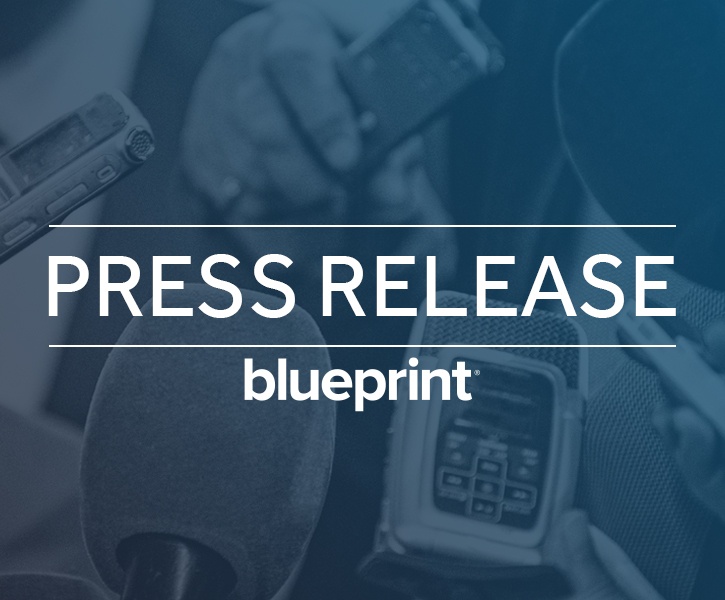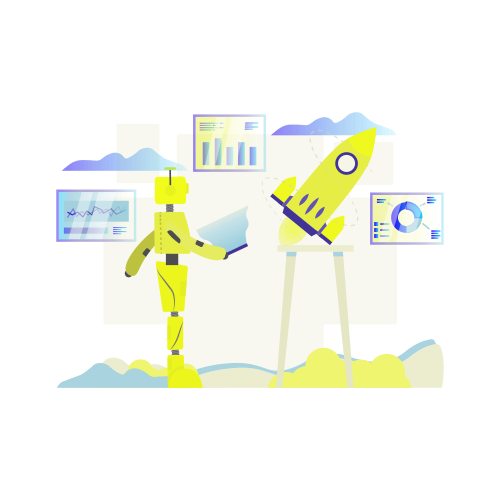7 Ways Automation Can Improve the Healthcare Industry
On a daily basis, healthcare providers deal with manual, paper-based tasks such as billing and claims management, patient onboarding, delegating medical professionals, collecting patient data, and providing prescriptions - among others.
While these tasks are tedious and time-consuming, they're absolutely critical. However, as more people seek medical attention, these manual tasks take longer to complete and become prone to error, putting the institution and patient at risk. Considering that 1 in 6 people will be over the age of 65 by 2050, the future dictates that these manual tasks will be at an even higher volume. Healthcare workers simply don't have the time to be filling out forms while simultaneously tending to a room filled with patients; neither will be done properly and the consequences are much too high.
For our global healthcare system to cope with the rising demand for medical services, it's absolutely critical that they focus their resources on adapting processes to be more efficient and focused on patient safety.
Automation has enabled many industries to revolutionize the way they work and applying it to the healthcare industry can lead to the same result. Automating operational and administrative tasks can result in better patient experience, improved quality of medical service, reduced risk of non-compliance, and lowered costs.
Here are 7 ways automation can help Healthcare organizations improve their practice:
1. Simplifying patient appointment scheduling
For a patient, scheduling an appointment with a doctor usually happens online in a matter of minutes, but what happens behind the scenes is a bit more complicated. Healthcare institutions have to collect personal information, diagnosis, insurance details, and confirm the doctor’s availability. If the right information cannot be accessed during the registration process, or if the doctor is not available, it's up to the staff to inform the patient beforehand.
Implementing automation can resolve some of the bottlenecks related to scheduling patient appointments. Bots can automate patient data collection and processing, so patients can be optimally scheduled according to diagnosis, location, doctor availability, and other criteria. By simplifying appointment scheduling, healthcare institutions can focus their efforts on providing exceptional service and other tasks that cannot be automated.
2. Speeding up account settlementsHealthcare institutions have to monitor, calculate, and evaluate bills accumulated during the diagnosis and treatment of each patient. These records must be accurate, but since processing this data is usually done manually it's error-prone, which leaves the institution at risk of non-compliance and payment delays.
Bots can accurately calculate bills while taking into account the costs for tests, medicines, and doctor fees. Automation software can notify patients of their bill amount and collect payments. By introducing automation, healthcare providers can eliminate inaccuracies associated with bill calculation and speed up account settlements.
3. Streamlining claims managementNearly 92% of Americans have health insurance coverage. Managing their insurance claims involves tasks like data input, processing, evaluation, and dealing with appeals. The entire process is manual, time-consuming, and prone to error. In addition, the longer a claim sits in accounts receivable the more serious the impact can be on the institution’s cash flow.
Automation can streamline the process of claims management. Bots can reliably accelerate the data processing of insurance claims and avoid errors. Clearly, leveraging automation technology leads to more efficient processes which ultimately ensures healthcare institutions are cash flow positive.
4. Implementing discharge instructionsGenerally, patients are required to follow post-discharge instructions such as how and when to take medication. It's almost impossible for the healthcare provider to check in with the patient to ensure these instructions are being followed. This can be especially burdensome because if doctors cannot follow-up with patients, then people may continue being sick, putting more strain on the healthcare system.
However, leveraging automation can enable healthcare providers to check in on patients post-treatment by sending reminders about medications or prescription pick-up. Healthcare institutions can also use automation to remind patients of upcoming appointments and tests. Additionally, these communications are bi-lateral, so a patient can alert their healthcare provider if they need any assistance. Automation can improve the patient's experience, enable doctors to provide better medical services, and reduce re-admissions.
5. Recording audit proceduresCollecting, verifying, and reporting are critical parts of the audit process, but each step requires the input of multiple people, leaving room for misinterpretation and error. However, the accuracy of these reports is absolutely critical as they are used by auditors and regulators to determine the quality of service, patient safety, and compliance. If they are not completed properly, the institutions reputation can be impacted, they can be fined, or worse they can be shut down.
But, these procedures can be optimized for greater accuracy with automation. Bots can collect information, verify data, and generate reports during audits that can be automatically shared with the right people for evaluation and approval. With automation, healthcare staff can ensure accountability for different auditing procedures, and monitor compliance more accurately. If a bot produces a report that may suggest non-compliance, healthcare workers can immediately amend that process.
6. Improving the healthcare cycleHealthcare providers collect and store large amounts of patient data in a generic database. This makes it incredibly difficult to extract and optimize the data for analysis. In addition, as more and more patients seek medical assistance - largely due to an aging population - the volume of data becomes more difficult to manage.
Automation software can support healthcare institutions by making it easier for them to extract and analyze critical data. While an automation tool will not store patient data for you, it will store critical business processes that dictate how the healthcare worker can access the information. The benefit of this is that, once the business process is automated, healthcare workers can access critical information faster, therefore they will be able to spend more time analyzing the data and providing faster advice for patients. In addition, these business processes can be stored within a centralized repository. For example, the Blueprint Enterprise Automation Suite stores business processes and artifacts in a versioned, auditable, and secure location. This ensures bots are always optimized and staff have access to critical information faster. Healthcare workers can spend less time running through the process steps themselves, and focus on assisting patients.
7. Managing healthcare workflowsRunning a healthcare institution involves various workflows such as managing and coordinating workers, case and utilization management, remote monitoring, and patient wellness. These workflows contain information about critical routine tasks that are essential for healthcare providers and patients. Traditionally, these workflows are managed manually and are a huge time investment for healthcare staff.
Automating workflows orchestrates how work gets done in a way that is centralized and streamlined. It makes the process of assigning tasks more efficient and less time-consuming. Automated workflows can remove bottlenecks, improve the patient experience, and accelerate response times. With this approach, healthcare workers can spend more time focused on patient care and other critical activities.
There is no doubt that this is a challenging time for healthcare organizations. However, as we have seen, leveraging automation has the potential to transform the healthcare industry and lead them in a direction that is focused on healthier patients, more accessible healthcare, improved patient experience, improved use of data, and an industry-wide commitment to value and quality.
If your organization has already started their automation journey, learn how Blueprint can help you scale it across all your departments by watching this short product overview video.
Share this
Recent Stories

Blueprint Software Systems and Avanade Partner to Help Clients Migrate Existing Automations to Microsoft Power Automate

Inherited a Messy PAD Estate? Here’s How to Get Control—Fast


